WORLD WAR II

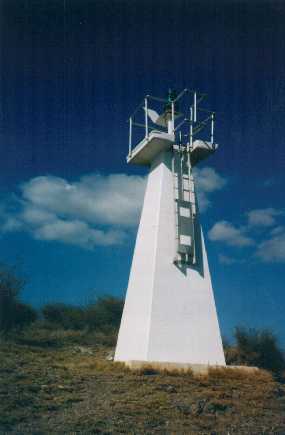
Ketchikan
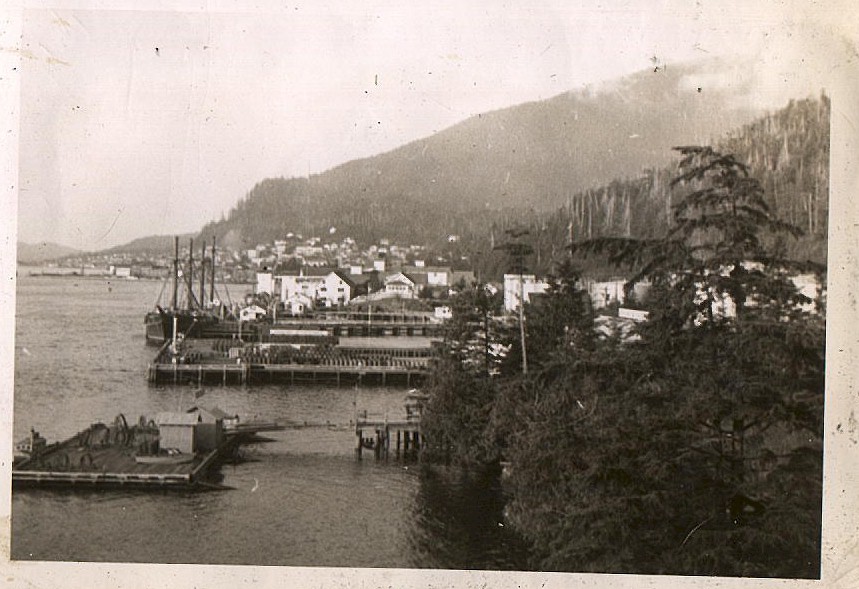 Ketchikan is located in the southernmost part of Southeast Alaska, known as Alaska's first city. Ketchikan is
679 miles north of Seattle and 235 miles south of Juneau, on the west shore of Revillagigedo Island. Revillagigedo is the 5th largest island in Southeast with 1,607 square miles and 309 miles of shoreline. Ketchikan's history includes a mix of fishing and fish processing, mining, timber, and more recently tourism. The first explorer to chart the region was Lieutenant Don Jacinto Caamano in 1792. Next came the explorer Vancouver who charted the area. Following these early explorers, Ketchikan became a gateway for the adventurous who traveled the Inside Passage in search of gold, furs or fish. A salmon saltery was built in 1883. In 1887 a salmon cannery was built on the banks of Ketchikan Creek.
Ketchikan is located in the southernmost part of Southeast Alaska, known as Alaska's first city. Ketchikan is
679 miles north of Seattle and 235 miles south of Juneau, on the west shore of Revillagigedo Island. Revillagigedo is the 5th largest island in Southeast with 1,607 square miles and 309 miles of shoreline. Ketchikan's history includes a mix of fishing and fish processing, mining, timber, and more recently tourism. The first explorer to chart the region was Lieutenant Don Jacinto Caamano in 1792. Next came the explorer Vancouver who charted the area. Following these early explorers, Ketchikan became a gateway for the adventurous who traveled the Inside Passage in search of gold, furs or fish. A salmon saltery was built in 1883. In 1887 a salmon cannery was built on the banks of Ketchikan Creek.
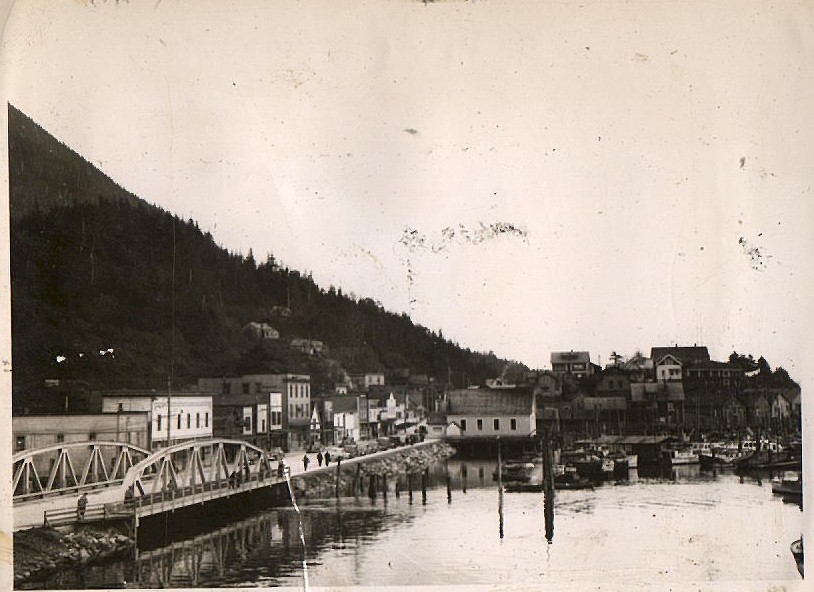 The town was officially incorporated in 1887 and with this Ketchikan became a permanent village. By the early 1900's Ketchikan had opened a general store and had a population of 800. During the Klondike Gold Rush, Ketchikan was a stopover for the thousands who traveled the Inside Passage on their way to Skagway. Most continued on driven by the lure of gold and their dreams of striking it rich. Some stayed to try their luck there.
During World War II, Ketchikan developed exponentially. The increase in Shipping
of war materiel, and the location of Ketchikan along the Inside Passage made it
an ideal port for ships enroute to the war in the Aleutians. The Coast Guard established a base at Ketchikan to
maintain the channel marking and bouys along the waterways. The Ketchikan Coast Guard station remained in operation until the end of World War II
The town was officially incorporated in 1887 and with this Ketchikan became a permanent village. By the early 1900's Ketchikan had opened a general store and had a population of 800. During the Klondike Gold Rush, Ketchikan was a stopover for the thousands who traveled the Inside Passage on their way to Skagway. Most continued on driven by the lure of gold and their dreams of striking it rich. Some stayed to try their luck there.
During World War II, Ketchikan developed exponentially. The increase in Shipping
of war materiel, and the location of Ketchikan along the Inside Passage made it
an ideal port for ships enroute to the war in the Aleutians. The Coast Guard established a base at Ketchikan to
maintain the channel marking and bouys along the waterways. The Ketchikan Coast Guard station remained in operation until the end of World War II
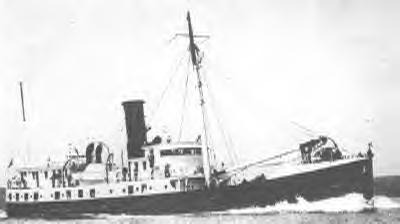 Uncle
Ed was transferred to the Bouy Tender Hemlock sometime in 1943. The Hemlock was built by the Berg Shipbuilding Company of Seattle Washington. The Ship was contracted to the U.S.L.H.S. on 12 Jan 1933 for $228.480.60 Launched on 20 Jan 1934 and commissioned USLHT HEMLOCK in 1934. Built as a
cost-wise tender specifically for duty in Alaska waters. She was specially equipped with a double bottom and larger fuel tanks.
U.S.Coast Guardsman Jim
Gill a
Quartermaster Petty Officer 1st Class remembers
the Hemlock: "I
joined HEMLOCK at Port Angeles, I think it was January of 1942 She was on her
way back to Ketchikan and stopped by the CG Air Station just long enough to pick
up a draft of about 10 sailors for transfer to various units. They took us out
in the station motor launch. The ship then went on up the inside passage as far
as Mary Island where we started working aids and replenishing light stations. We
did Mary Island, Tree Point, Lincoln Rock and a bunch of buoys. As you recall,
the CG took over the USLHS in 1939 so only a couple of years had gone by and the
change-over was still in it's painful stages."
Uncle
Ed was transferred to the Bouy Tender Hemlock sometime in 1943. The Hemlock was built by the Berg Shipbuilding Company of Seattle Washington. The Ship was contracted to the U.S.L.H.S. on 12 Jan 1933 for $228.480.60 Launched on 20 Jan 1934 and commissioned USLHT HEMLOCK in 1934. Built as a
cost-wise tender specifically for duty in Alaska waters. She was specially equipped with a double bottom and larger fuel tanks.
U.S.Coast Guardsman Jim
Gill a
Quartermaster Petty Officer 1st Class remembers
the Hemlock: "I
joined HEMLOCK at Port Angeles, I think it was January of 1942 She was on her
way back to Ketchikan and stopped by the CG Air Station just long enough to pick
up a draft of about 10 sailors for transfer to various units. They took us out
in the station motor launch. The ship then went on up the inside passage as far
as Mary Island where we started working aids and replenishing light stations. We
did Mary Island, Tree Point, Lincoln Rock and a bunch of buoys. As you recall,
the CG took over the USLHS in 1939 so only a couple of years had gone by and the
change-over was still in it's painful stages."
The Hemlock was built to replace the USLHT
Fern. Assigned to the 16th Light House district after commissioning and Designated WAGL-217 at the start of WWII. Hemlock spent her entire career in Alaskan waters, primarily operating out of Ketchikan, Alaska.
During WWII she was assigned to the 13th and 17th Coast Guard Districts. Her wartime service included
Army and Navy salvage and repair duties. During the Aleutians
Campaign the Army, Navy, and Merchant
Marine sent many transports, freighters, tankers, and cargo ships through the
Inside passage to support the Aleutians Campaign. Alaskan weather is some of the
fiercest in the world. The large numbers of ships and the inclement weather were
a recipe for many disasters. Many ships came under duress during this period and
the U.S. Coast Guard was there to assist. In
January of 1942 she helped to re-float the sunk army transport USAT David W.
Branch. later in December 1942 she towed the damaged USAT Texada. In October 1943 she assisted in the salvage operations of the
SS Prince Rupert
. The S.S. Prince Rupert was a Steamship that belonged to the Alaskan Steamship
Company it had several incidents of near disaster, and each time the Coast Guard
was there to render assistance. One instance the Prince Rupert arrived in
Petersburg, Alaska via the Wrangel Narrows. While making the approach to
Petersburg, the Prince Rupert got slightly out of the channel and brushed
against an adjoining reef. She began to take on water and made a distress call
to the U.S. Coast Guard. Even after taking on water she
managed to make the dock
at Petersburg, but with a serious list to the heel. U.S.
Coast Guardsman Jim Gill recalled the two incidents. "I
was in McLANE at the time and we responded to the call. The PR was also involved
in a previous situation,
a fire. I believe she was in Ketchikan at the time. It was scary but proved to
be minor. In the end I believe the ship was lost
in a grounding sometime after WWII.
The S.S. Prince Rupert was a Steamship that belonged to the Alaskan Steamship
Company it had several incidents of near disaster, and each time the Coast Guard
was there to render assistance. One instance the Prince Rupert arrived in
Petersburg, Alaska via the Wrangel Narrows. While making the approach to
Petersburg, the Prince Rupert got slightly out of the channel and brushed
against an adjoining reef. She began to take on water and made a distress call
to the U.S. Coast Guard. Even after taking on water she
managed to make the dock
at Petersburg, but with a serious list to the heel. U.S.
Coast Guardsman Jim Gill recalled the two incidents. "I
was in McLANE at the time and we responded to the call. The PR was also involved
in a previous situation,
a fire. I believe she was in Ketchikan at the time. It was scary but proved to
be minor. In the end I believe the ship was lost
in a grounding sometime after WWII.
USCGC McLane (WMEC-146)
 In addition to his experience with the SS Prince Rupert, Jim Gill had
another interesting experience on the USCGC Mclane during the war with a
Japanese submarine. Here is how he tells it: I
was aboard McLANE on 9 July 1942 during the so-called "Battle of Cape
Addington." Briefly. McLANE and FOREMOST engaged a Japanese
sub, RO-32 and over the course of several days managed to depth charge and
destroy the sub. During the fracas, RO-32 fired a torpedo at McLANE, a VERY near
miss. Both CO's, McLANE (LT Ralph Burns) and FOREMOST (LT Niels Tompsen)
received the Legion of Merit for the action."
In addition to his experience with the SS Prince Rupert, Jim Gill had
another interesting experience on the USCGC Mclane during the war with a
Japanese submarine. Here is how he tells it: I
was aboard McLANE on 9 July 1942 during the so-called "Battle of Cape
Addington." Briefly. McLANE and FOREMOST engaged a Japanese
sub, RO-32 and over the course of several days managed to depth charge and
destroy the sub. During the fracas, RO-32 fired a torpedo at McLANE, a VERY near
miss. Both CO's, McLANE (LT Ralph Burns) and FOREMOST (LT Niels Tompsen)
received the Legion of Merit for the action."
USCGT
Hemlock (WAGL-217) Photographs Uncle Ed was stationed at the U.S. Coast Guard station in Ketchikan aboard the USCGT Hemlock (WAGL-217)While there he did
bouy repair work as well as maintenance and other duties in the Inside Passage.
Below are some photos of the Hemlock transporting a Grumman Seaplane. this is the first time a bouy tender was ever used as an Aircraft
Carrier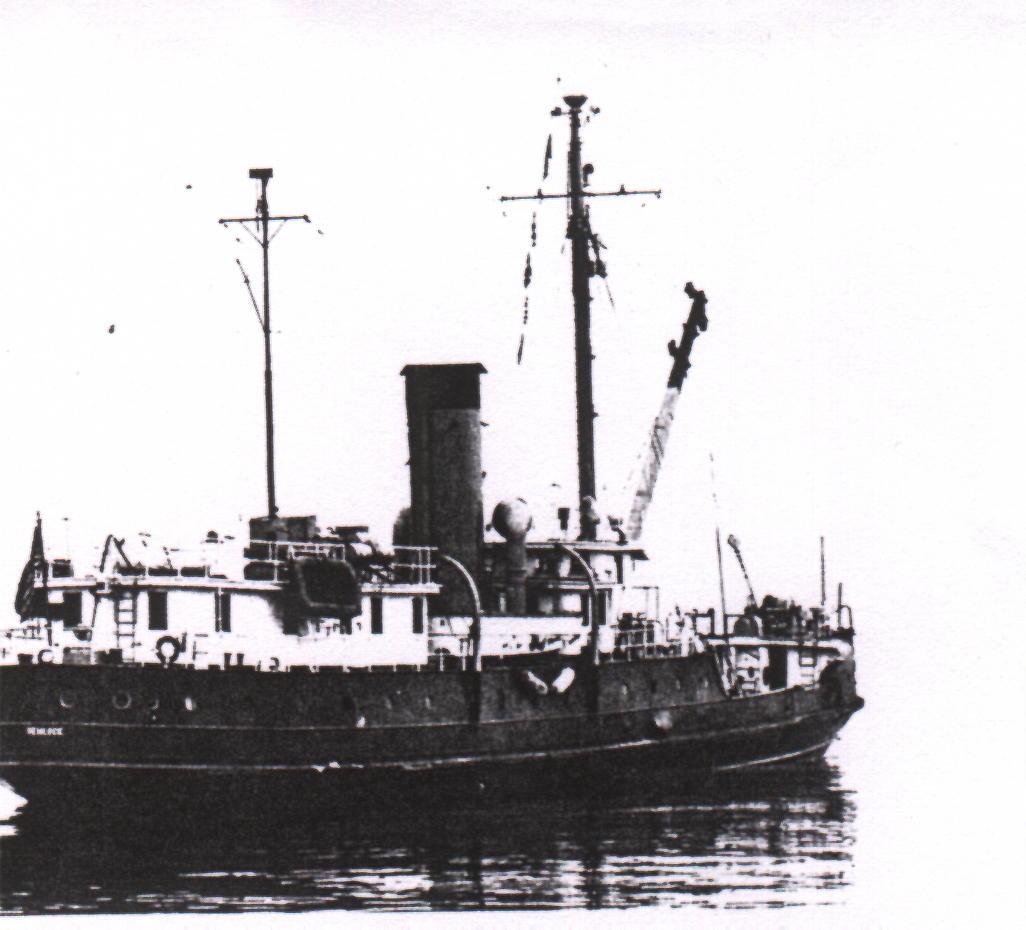 After
the Prince Rupert episode the Hemlock continued with her navigation repair
duties. In
Jan 1944 the Hemlock assisted the SS William L
Thompson,
that was grounded on a reef. Her final wartime service act was to re-float the SS
F.W.S. Brandt, which had sunk after hitting a reef in
a fog bank. After the war she returned to normal bouy tending duties and remained at Ketchikan Alaska until her decommissioning on Jun 18 1958. She was sold to private company on 2 Aug 1961 became the private vessel
Hemlock later he engines were removed and she was converted in a barge and was still in use in Alaska well into the
1980's.
After
the Prince Rupert episode the Hemlock continued with her navigation repair
duties. In
Jan 1944 the Hemlock assisted the SS William L
Thompson,
that was grounded on a reef. Her final wartime service act was to re-float the SS
F.W.S. Brandt, which had sunk after hitting a reef in
a fog bank. After the war she returned to normal bouy tending duties and remained at Ketchikan Alaska until her decommissioning on Jun 18 1958. She was sold to private company on 2 Aug 1961 became the private vessel
Hemlock later he engines were removed and she was converted in a barge and was still in use in Alaska well into the
1980's.
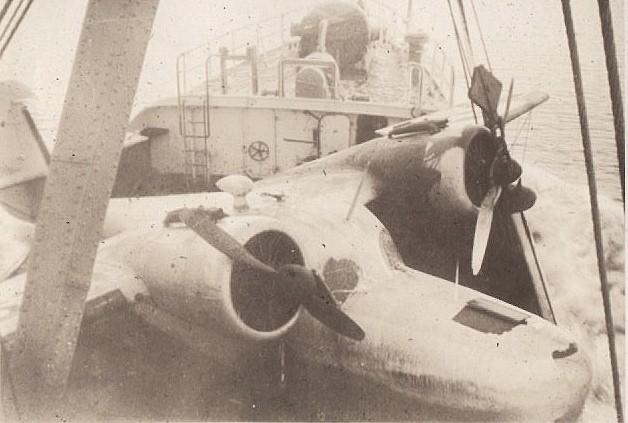
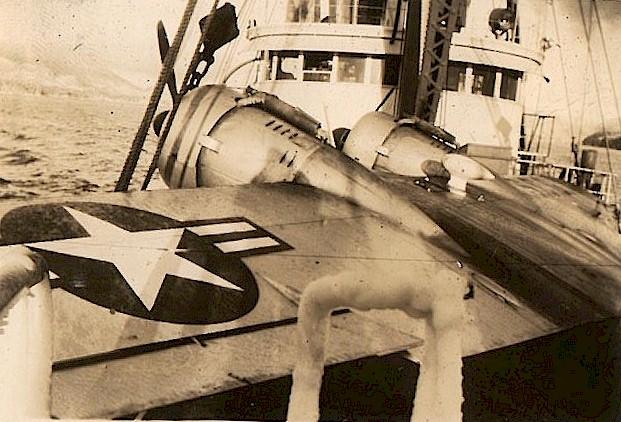
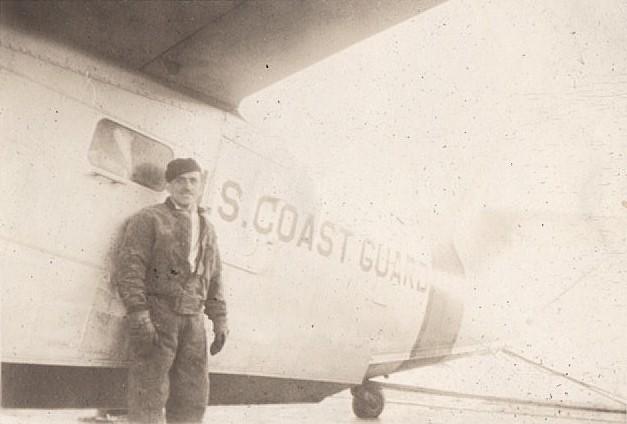
Uncle Ed continued his service after World War II He remained in the Coast Guard for another ten years after the war. Retiring as a Chief Petty Officer with 21 years of service. For more on his story click on the link below.
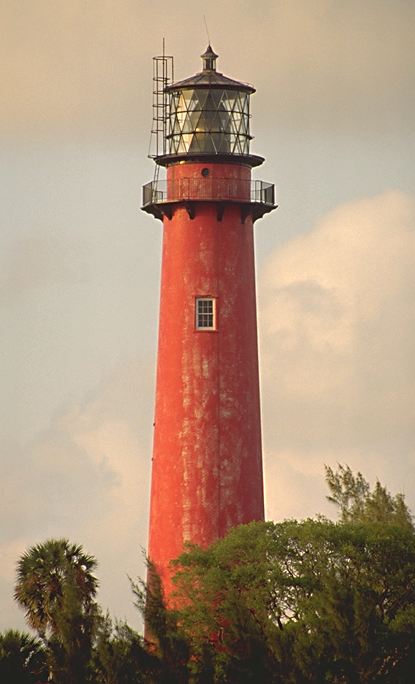 Post-World War II: Lighthouse Keeper and Tugboat Captain
Post-World War II: Lighthouse Keeper and Tugboat Captain
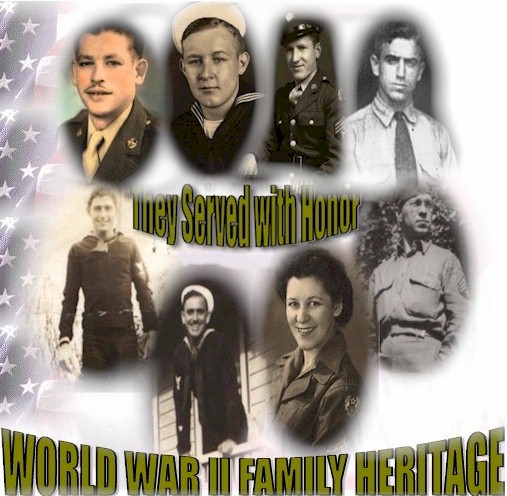 They
Served with Honor: Home Page
They
Served with Honor: Home Page